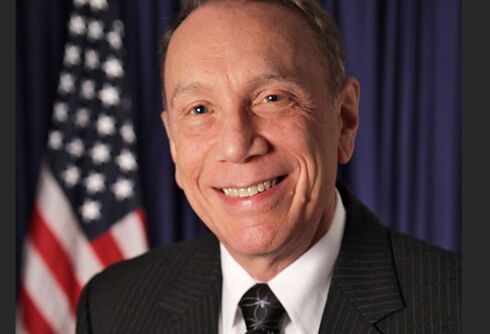For many years, the sight of Pearl Hart’s lavender Auburn car pulling up outside the courthouse struck fear into her opponents. Known for her uncompromising nature and fierce defense of those who could not defend themselves, Pearl Hart was not a lawyer prosecutors ever wanted to face.
She defended gay rights all her life, often without charging a fee. She was unpopular with the establishment, being, in the words of the Chicago LGBT Hall of Fame, “too liberal and too honest to ever win the backing of a corrupt and prejudiced political system.” Within the LGBTQ+ community, however, she was regarded as a heroine, a woman who would protect their rights at any cost, and the first lesbian lawyer to appear before the Supreme Court. Her name is still spoken with reverence in the lesbian bars of Chicago, and more publically, her name lives on in the city’s Gerber/Hart Library, which is devoted to LGBTQ+ books and archives.
Related:
These 7 history-making LGBTQ+ Latinx artists were all honored on stamps
These larger-than-life queer Latinx artists all ended up immortalized in miniature.
Hart was born in Traverse City, Michigan in 1890 to Jewish immigrant parents, the fifth daughter of David and Rebecca Harchovsky. Her father was a rabbi who, soon after her birth, moved his family to Chicago, where he served a congregation on the southwest side. Hart herself would later say that this early exposure to poverty and her parents’ dedication to helping others formed the basis of her lifelong dedication to social justice. She recalled that she was a much-loved child, spoiled on occasion, who was encouraged in everything she did.
Never Miss a Beat
Subscribe to our newsletter to stay ahead of the latest LGBTQ+ political news and insights.
The young Pearl adopted the name Hart when she began her professional career. She found it easier and more convenient but never otherwise distanced herself from her origins as the child of immigrant parents, later vehemently arguing in the Supreme Court that “I defend the foreign born against the present deportation hysteria because of a consciousness that it was the foreign born and their children who built this nation of ours and who have been its most loyal partisans.” Hart trained as a stenographer before studying at John Marshall Law School and was admitted to the Illinois Bar in 1914, after which she became one of the first women to specialize in criminal law, serving as a probation officer from 1915 to 1917.
Soon afterward, she met Blossom Churan, the daughter of a law officer with whom Hart shared an office. The two entered a relationship, one which turned serious after the deaths of Churan’s father and Hart’s mother, from whom they were careful to conceal their connection. Hart never denied that she was a lesbian, but neither did she flaunt it, especially during her early years when she was fighting to establish her professional reputation.
Her five foot eleven, two hundred pound frame made her an imposing presence. She was described by journalist I.F. Stone as a “big benevolent Brunnhilde of a woman,” but only to those she supported. To those facing her across a courtroom, she was a terrifying spectacle, utterly ruthless and laser-focused behind her heavy-rimmed glasses. Hart dedicated herself to supporting and defending those who could not help themselves and became the first woman appointed as a public defender in the Morals court, which dealt with cases of prostitution, immoral or homosexual conduct, child abuse, and adultery. She achieved what her friend, journalist Studs Terkel, termed a remarkable acquittal record of over 90%.
By 1937, Hart was widely respected professionally and became a founding member and secretary of the National Lawyers Guild, which uniquely for the time was fully racially integrated. The 1940’s saw her become a fully-fledged civil rights activist serving on the board of the civil rights bail fund, which sought to legally challenge racial segregation and discrimination in matters such as housing and healthcare. She also founded the Midwest Association for the Protection of the Foreign Born, to protect those being threatened with deportation.
In her personal life, by 1947 Hart was proposing to live with Churan at 2821 North Pine Grove Avenue, in what was then the heart of gay Chicago. Churan, though, had taken as a lover the prominent physician Dr. Bertha Isaacs, and rather than separate, Hart proposed that they all live together, which they did in what Hart’s later lover Valerie Taylor called a “rather gothic existence” until Churan’s death.
All three women kept their lives compartmentalized and, in the words of Taylor, “Neighbors saw three aging women, two with successful careers, one who stayed at home. Out of town relatives or friends stayed at nearby hotels.”
Despite this, Hart was increasingly living openly as a lesbian, and from the 1960s onward, she focused on ensuring that the rights of the LGBTQ+ community were legally protected. The Lavender Scare, termed a “government witch hunt (to) expose closeted queers,” sought to expose LGBTQ+ individuals in order that they could be dismissed from the government, civil service and military. It greatly angered her. Ms. Hart became the go-to lawyer for the LGBTQ+ community, many of whom were subject to these entrapment police “stings.” She usually defended these cases for nothing or for only a minimal fee.
She also co-founded the Mattachine Society in the Midwest, which sought to ensure that LGBTQ+ individuals were aware of their legal rights and the protection that she and others could offer. The society also played a key role in bringing the plight of their members to wider attention, with one newsletter urging the people of Chicago to come “out of the closets and into the streets,” as Hart would protect them (the newsletter can be found dated May 1970 in the Pearl Hart Papers, Box 10 Folder 7).
She also consistently defended those caught up in the Red Scare, held without bail, and under threat of deportation. Most famously, she defended the Chicago men George Witkovich and James Keller, who were held for refusing to answer questions about their relationship with the Communist party at their deportation hearing. The case was ultimately heard by the Supreme Court on May 19, 1957. Hart won a hard-fought victory that meant that evidence of Communist Party affiliation could not be sought after a person was ordered to be deported. Such a public triumph on a national scale gave Hart a platform from which to campaign for LGBTQ+ rights on a grander level.
Hart became, for many, the public face of LGBTQ+ protection in Chicago and a champion of the underdog. Known as the “Guardian Angel of Chicago’s Gay Community,” she practiced law for over 60 years, prevented from becoming a judge by the establishment with which she remained consistently unpopular. She didn’t stop her crusade to make the world better and more equal until a short while before her death in 1975.
Today, her dog-eared photo still graces many a Chicago bar. In the words of the Chicago LGBT Hall of Fame – into which she was inducted posthumously in 1992 – she is remembered for her “inheritance,” which it defines as “the love and respect of thousands of men and women whom she helped, and a society somewhat better for her effort – which is all she wanted.”
















